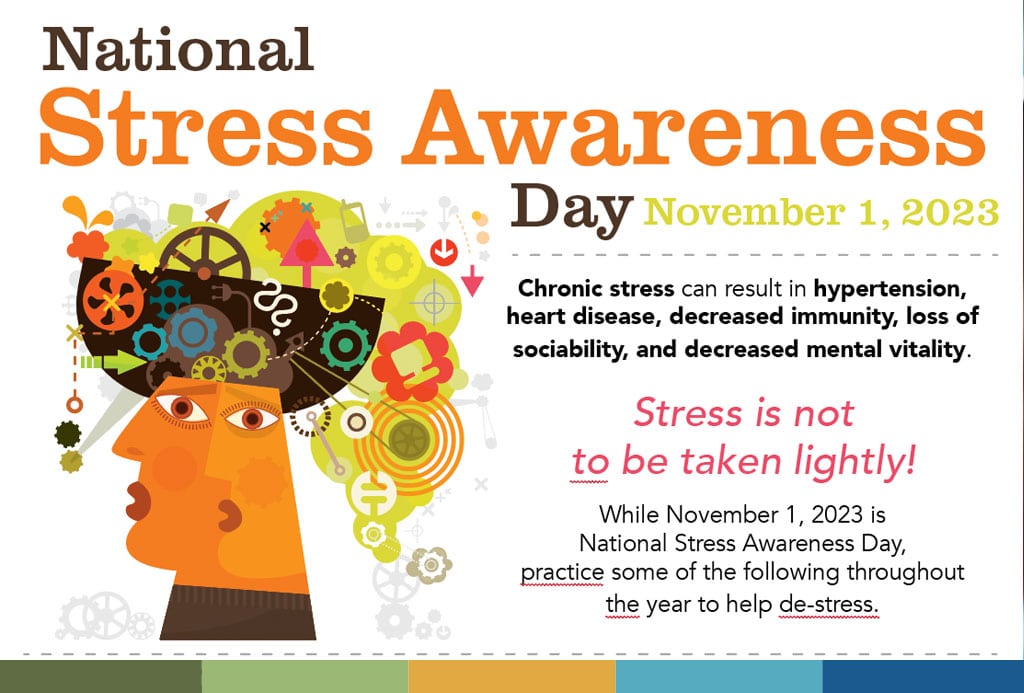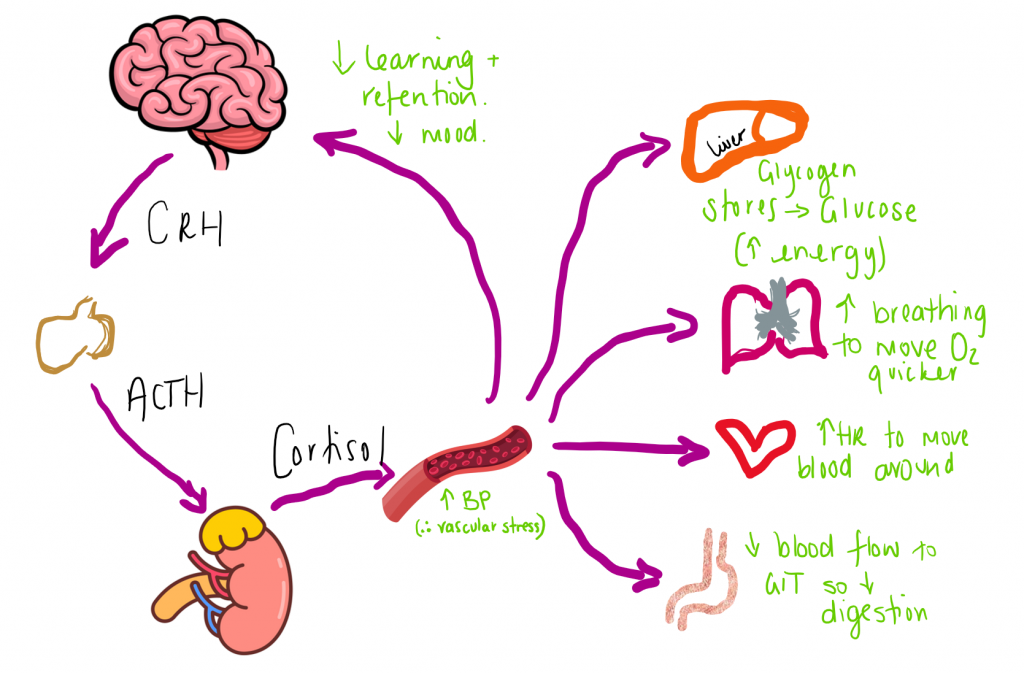Written by Hannah Porter
Let’s talk about stress, baby.
National Stress Awareness Day is upon us and, like all other special ‘days’, its purpose is to encourage us to consider this particular topic more than we normally would and give a platform to some information about it.

You’d be a bit of an oddity if you said stress wasn’t an active player in your day-to-day life, which isn’t a bad thing!
The problem, like most things in life, is when we get out of balance and end up with too much stress in our everyday life.
Stress as we know it, is the result of a series of physiological and biochemical changes in our bodies in response to a stimulus.
This can be neurogenic; from our brain e.g. approaching a deadline (11:45pm speed typing, anyone) or fear or worry about an issue or upcoming event.
This can also be physiological; from our body e.g. hypoglycaemia, infection.
It is your body’s way of giving you more of what you need when you tell it you need it.
The problem is because of the way we’ve evolved and the way we live now don’t match up.
When we have excess emotional or mental stress, our body prepares us to run away from the tiger.
But we’re not running (problem one) and we’re acting as though we’re seeing the tiger multiple times a day, nearly every day.
Signs of stress come back to the changes in our body. A special part of your brain tells your pituitary gland to release adrenocorticotropic hormone (ACTH) that travels to your adrenal gland which sits on top of your kidney.
The zona fasciculata layer of the adrenals then produces and releases cortisol. It is the action of this special little glucocorticoid that results in the things we can feel that we call “stress”.

As you can see, stress can affect so many parts of your body, and if in major excess for a long time can have some really really bad side effects.
But nothing is less helpful for your stress levels than being told the details of how much damage your extra stress is doing to your body.
So let’s just agree, it’s not ideal.
I love a good bit of stress. I’m writing this a month out from my end of year exams and that little extra bit of stress is keeping me bright as a button and really focused for long stretches of the day.
Although it is hard at the moment, it is also really important to give my body a break from that cortisol.
A friend of mine sets a 90min timer and when it goes off, he leaves his computer regardless of what he’s doing.
Another has lunch outside every day (or in a non-workspace if it’s ordinary weather) & takes time to eat slowly and just sit.
My sister practices mindfulness and meditation, but I have toddlers so a long stretch of quiet isn’t always possible.
I have, however, taken on one of her favourite breathing techniques and try to do that once a day; take a deep breath in, hold, try and inhale a little bit more breath, hold for a count of three, then release.
I think she does that for 5 minutes, but my modified version is just 5 times in a row.
When I have a particular event or issue that I know is causing me stress, distraction is really helpful. Playing with a pet or going for a walk if you can is known to reduce cortisol production.
Another helpful breathing technique I use often is called ‘box breathing’ which I enjoy because I can pair with a visualisation of the marker moving around the box as I go through each component.
It helps to distract me from the issue at hand and slows my breathing and heart rate down, which all combine to tell my body there isn’t a tiger in the bushes anymore.

Normally, cortisol is under strong diurnal rhythmic regulation.
That is – it dips towards the end of the day and overnight, and surges pre-dawn. If we’re changing our sleep patterns regularly, or having lots of stimulus for cortisol production later in the evening, this can all get out of whack.
So prioritise good sleep habits; try and be as consistent as possible and work with your natural body cycles – early to bed and early to rise.
So try pencil in a slow coffee with friends, some play in the sunshine, deep breathing or a long walk and get those cortisol levels under control.










